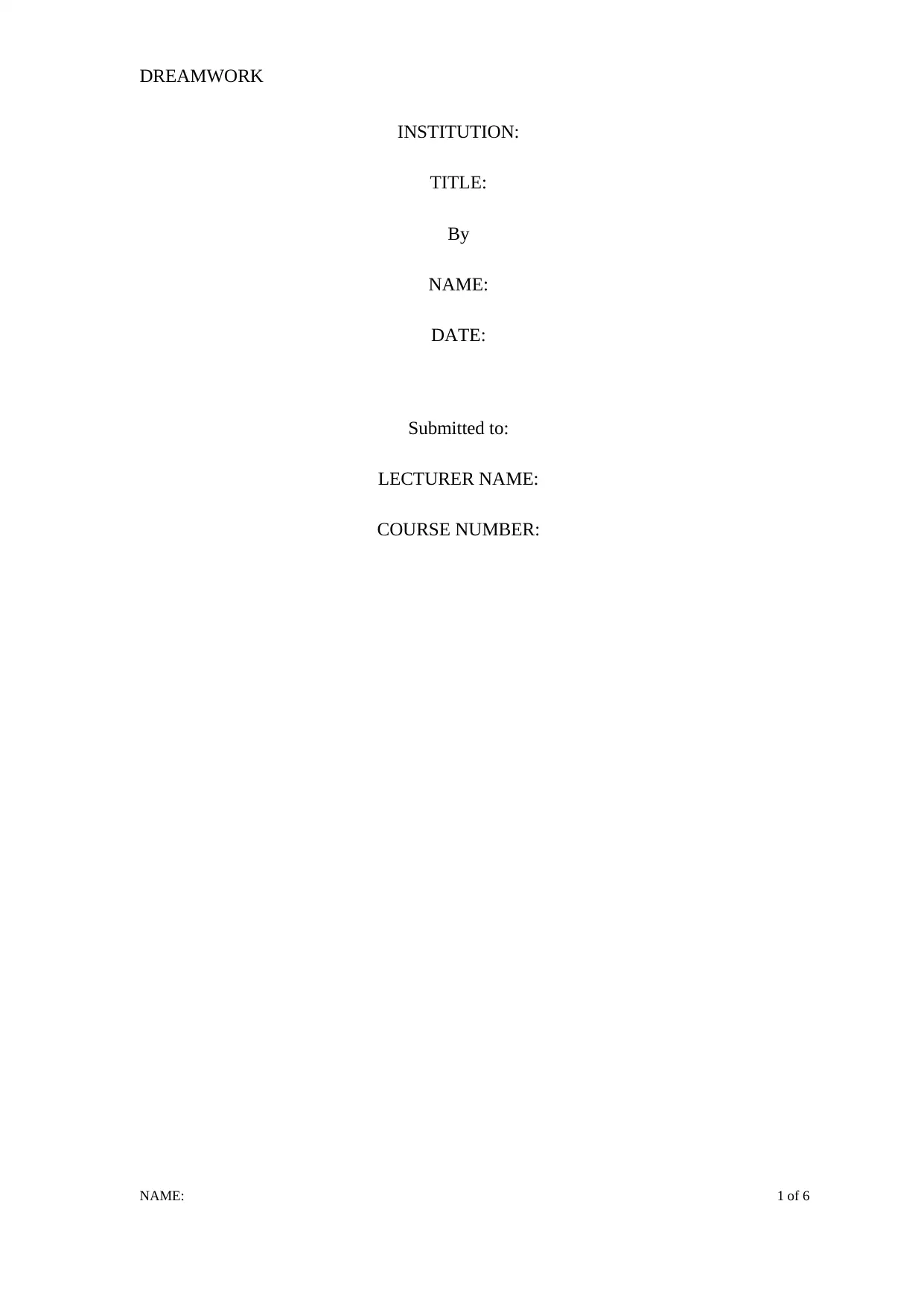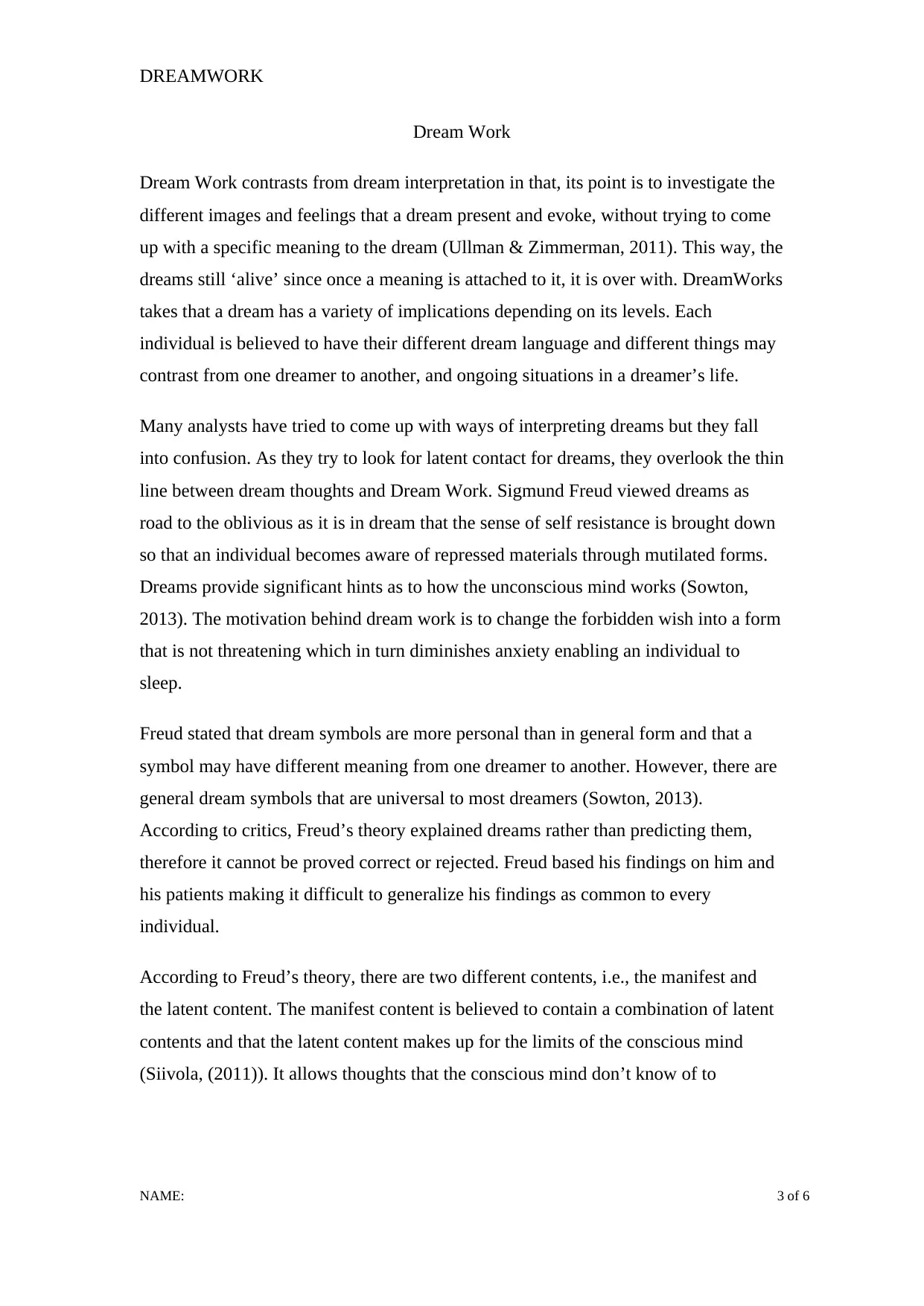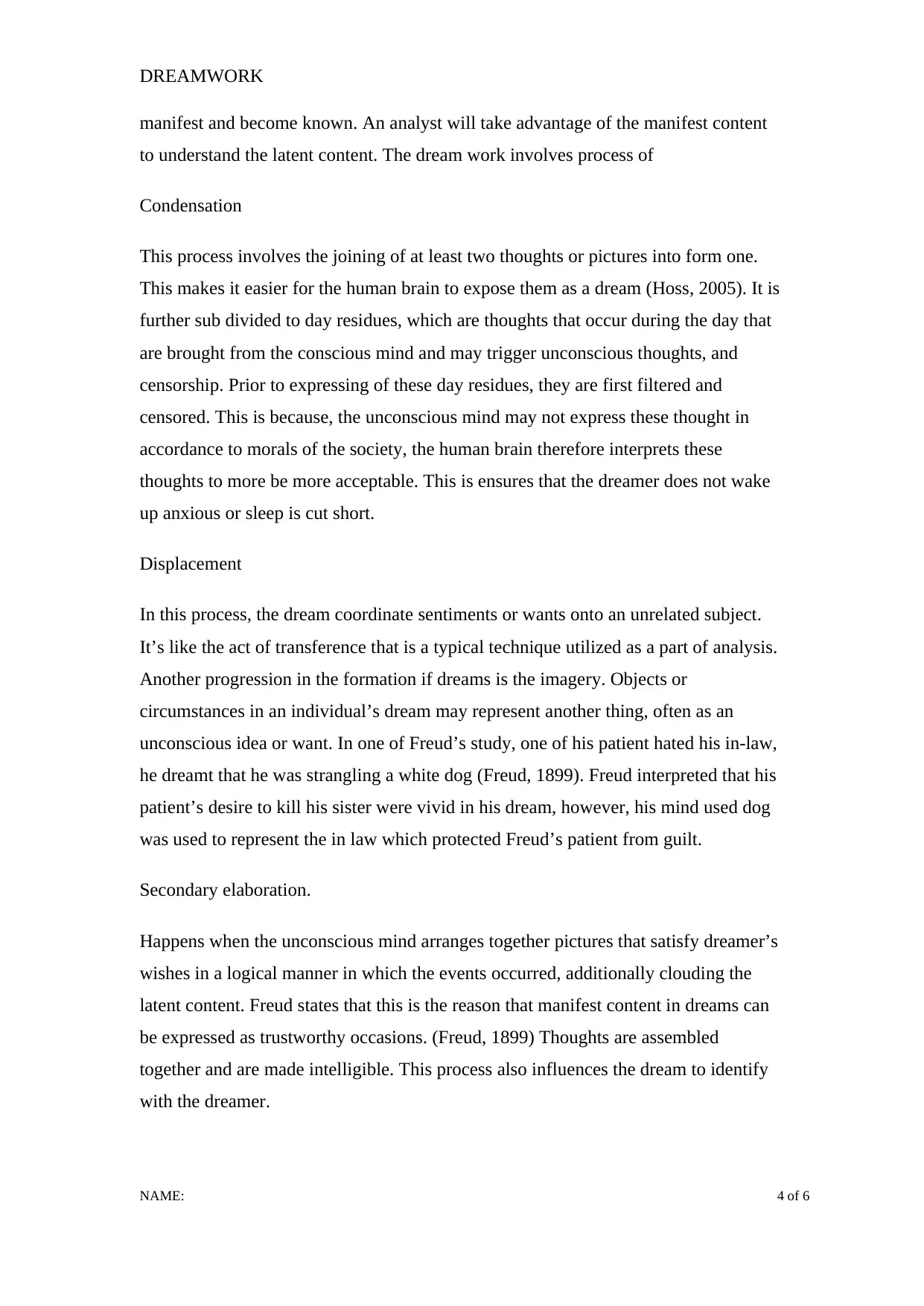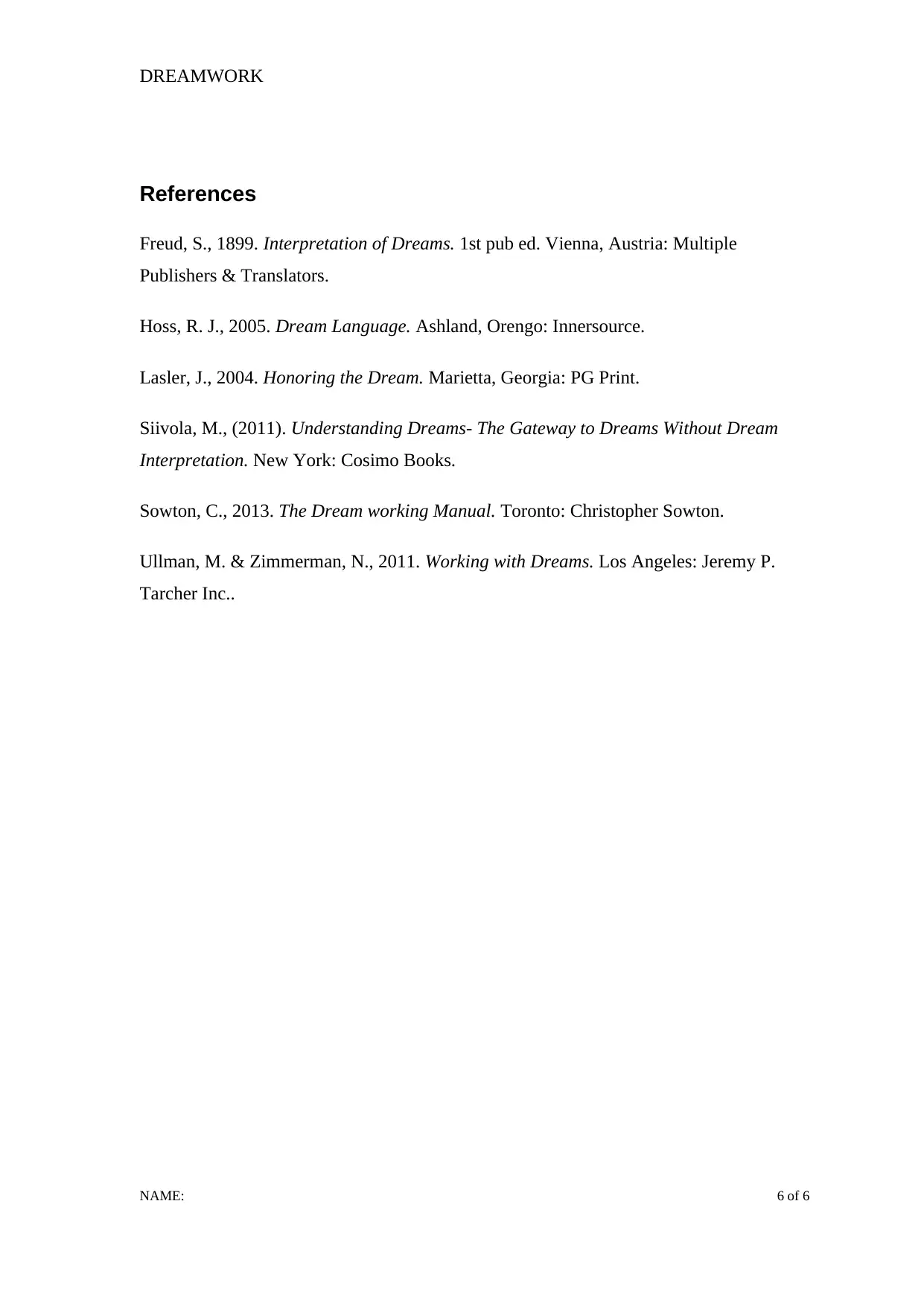Dream Work: Freud's Theories, Dream Analysis, and the Unconscious Mind
VerifiedAdded on 2020/05/08
|6
|1063
|25
Essay
AI Summary
This essay delves into the concept of dream work, contrasting it with dream interpretation, and focuses on Sigmund Freud's theories on dreams. It explores how dream work investigates the images and feelings evoked by dreams without seeking a specific meaning, emphasizing the individual and varied nature of dream languages. The essay examines Freud's view of dreams as a pathway to the unconscious, where repressed materials surface. It discusses the processes of condensation, displacement, and secondary elaboration within dream work, illustrating how the unconscious mind transforms thoughts and wishes. The essay also touches upon the manifest and latent content of dreams, providing insights into Freud's interpretation of dream symbols and the purpose of dreaming as a means of expressing repressed ideas. References to other theorists like Ernest Hartmann are made, showing the role of dreams in coping with life events. The essay is a comprehensive overview of Freud's theories, including its strengths and weaknesses, and is a useful resource for anyone studying psychology.
1 out of 6













![[object Object]](/_next/static/media/star-bottom.7253800d.svg)